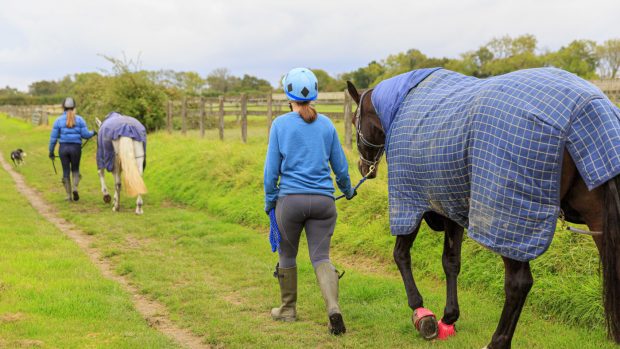Horses aged over 25 may be suffering from chronic laminitis without displaying any outward signs or suffering from contributory health conditions, a study has found.
Laminitis, which in severe, acute cases causes catastrophic pedal bone rotation, is a frequent cause of lameness and euthanasia in older horses. In many instances, this is as a result of endocrinopathic laminitis, which is caused by hormonal dysfunction.
The research, led by Garance Christen at the Swiss Institute of Equine Medicine, University of Bern, looked at 51 clinically sound horses from different age groups (15-32 years) and X-rayed their feet to check for pedal bone rotation.
The horses were also assessed for laminitis risk by recording their body condition scores (BCS), cresty neck scores (CNS) and levels of adrenocorticotropic hormone (ATCH).
High ACTH levels can be a sign of pituitary pars intermedia dysfunction (PPID, also known as Cushing’s), one of the main underlying health conditions that can lead to laminitis.
The other common contributory health condition is equine metabolic syndrome (EMS, a form of insulin resistance), of which fatty deposits on the crest, shoulders and tail head are an indicator.
Almost half of the total sample had signs of rotation on X-ray, although none of them showed signs of acute lameness or PPID.
Of these, horses aged over 25 were found to be three times more likely to have pedal bone rotation than horses in the younger age category.
Surprisingly, those with high CNS and BCS and above average seasonal ACTH levels were not found to be more prone to radiographic changes than those who had low or normal scores in these categories.
“Chronic laminitic changes can be present in the absence of clinical disease, especially if the horses’ age exceeds 25 years,” the study’s authors said.
“We think that radiographic changes are related to early or pre-clinical PPID in this cohort of horses because this remains the best explanation for the higher incidence of laminitis in the old age group.”
They said that owners and vets need to be aware of the increased probability of sub-clinical laminitis in those animals, even in the absence of a PPID diagnosis.
Continues below…

Research finds over half horses studied had mouth lesions after cross-country
The research queried whether “sex-based stereotypes” may be behind the increased number of lesions seen in mares

Viable equine herpes virus survives on bedding for 48 hours, study finds *H&H Plus*

Subscribe to Horse & Hound this spring for great savings
“Radiographic assessment of aged horses with suspicion of pre-clinical PPID remains important as no other diagnostic option for laminitis is currently available in the absence of clinical signs,” they said.
They added that as ACTH levels did not correlate with the presence of pedal bone rotation, this currently left researchers without an active biomarker to predict laminitic episodes.
One limitation of the study, however, was that insulin measurements were not taken and that this may be a more accurate predictor.
Horse & Hound magazine, out every Thursday, is packed with all the latest news and reports, as well as interviews, specials, nostalgia, vet and training advice. Find how you can enjoy the magazine delivered to your door every week, plus options to upgrade to access our H&H Plus online service which brings you breaking news as it happens as well as other benefits.





